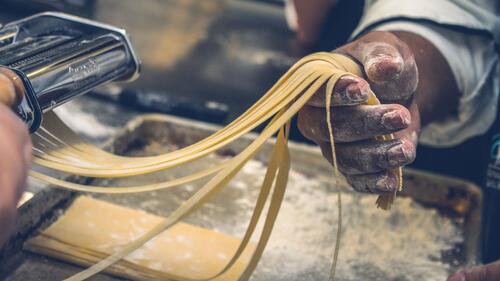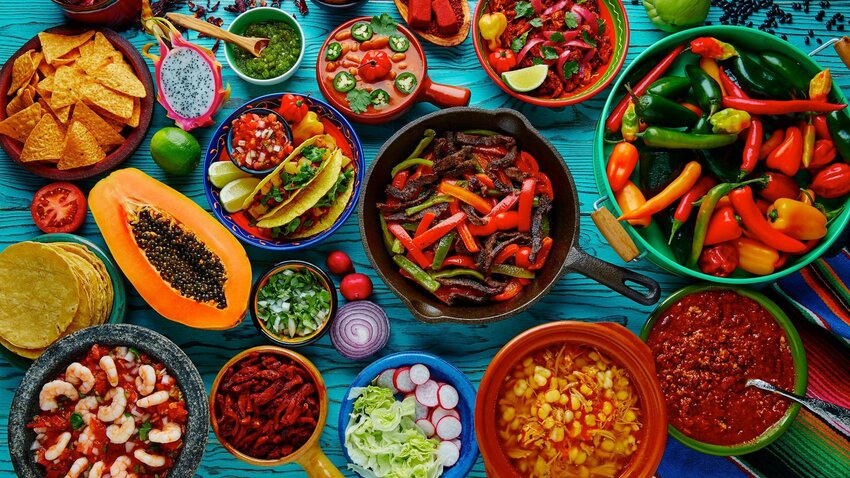Thoughts of Italy will always bring a few things to mind: the aqua-marine color so distinctive to the Mediterranean sea, a landscape of architecture that gives insights into an ancient world, and a legendary array of breads, cheeses, and wines that attracts travelers from across the globe looking to partake in simple, fresh cuisine. While you may argue that pizza is Italy’s ultimate export, you’d be neglecting the cultural significance of pasta and the traditions surrounding the different shapes, sizes, and textures that vary depending where you go in Italy. For Italians, pasta is the heart of the meal, crafted by hand into shapes perfected centuries before to hold a specific sauce perfectly. It also happens to be the best way to recreate an Italian adventure at home, from the comfort of your kitchen.
Even if hopping on a plane to start a trip in Lombardy and end in Sicily isn’t an option for you right now, experiencing all the flavors you would if you were there certainly is. The key is to find which regions of Italy you are most curious about, and take a look at what their signature pasta dish is. From there, ordering imported yet accessible ingredients and finding some quality wine pairings to recreate these dishes can instantly transport you to the heart of the Mediterranean. Here are five favorites to get you started on your culinary travels.
Piedmont: Agnolotti
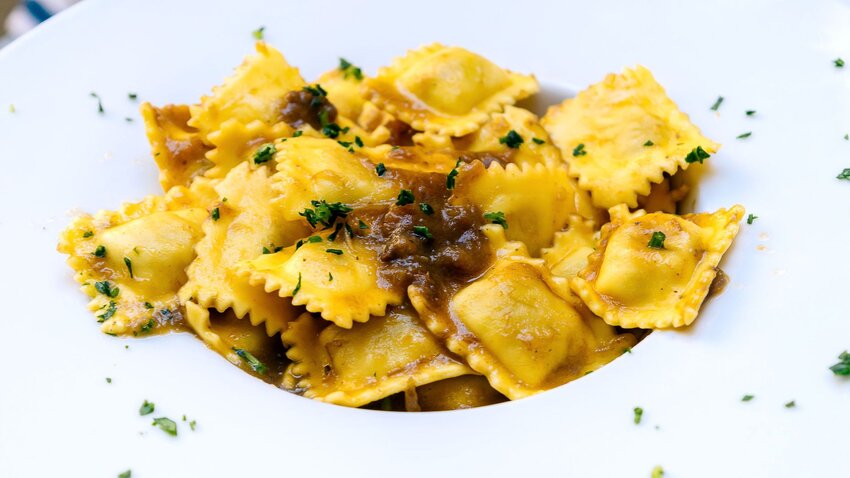
If you never heard of ravioli’s tiny, plump cousin, agnolotti, it’s time to make your introductions. The pillows of dough – often stuffed with cheese, meat, or vegetables, hail from the northern Italian region of Piedmont, dating back to the 12th century. Labor intensive, but delicious down to the last bite, agnolotti are typically made from a single sheet of dough folded over a filling and pinched. The shape can vary based on the areas in Piedmont where they’re being made, but they will always feature ample stuffing inside a thin sheet of pasta.
Agnolotti del plin is the traditional form of the dish, usually served in a light gravy made from braising the meat in the stuffing or in a butter and sage sauce. If you’re opting for the latter, or want a vegetarian-friendly option, agnolotti stuffed with mushrooms make for an especially delicious plate of pasta. Round out your meal with a bottle of Moscato D’Asti, a sweet, sparkling white native to the Piedmont region that pairs well with dessert.
Tuscany: Pappardelle
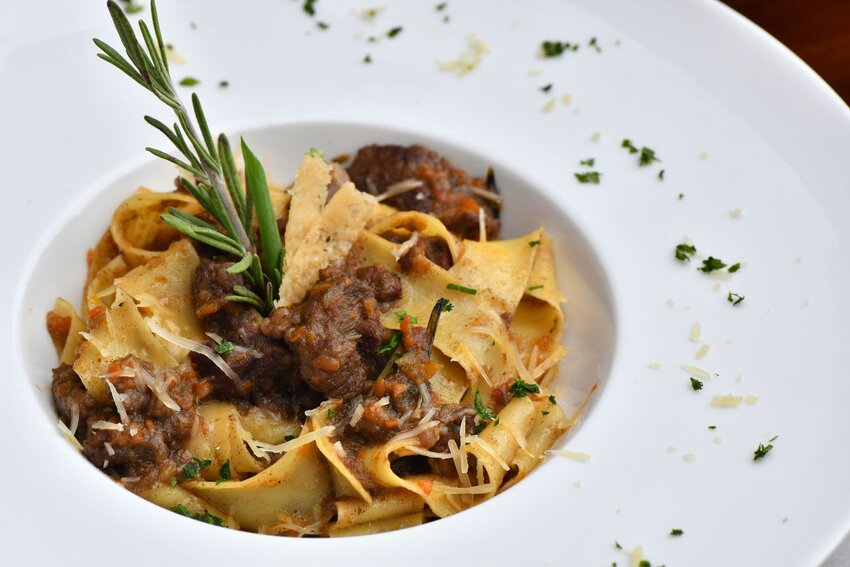
If you’re a fan of chow fun dishes from Cantonese cuisine, you’re going to love pappardelle. Long, wide, and ribbon-shaped, pappardelle is typically made with an egg-based dough so the pasta comes out fluffier. The name pappardelle comes from the word “pappare” in Tuscan dialect, which means “to gobble up.” You’ll typically see pappardelle on menus in Florence during the winter, because the pasta is usually served with heavier ragus made with gamey meats like wild boar.
If you’re not into game, or you can’t find wild boar at your local grocery store, try a recipe with sauce closer to a bolognese. When it comes to wine pairings, Chianti is the obvious choice. The most famous wine in the Tuscan region, the dark-fruit flavors and high acidity of Chianti will go nicely with a rich, meaty pappardelle dish.
Lazio: Bucatini
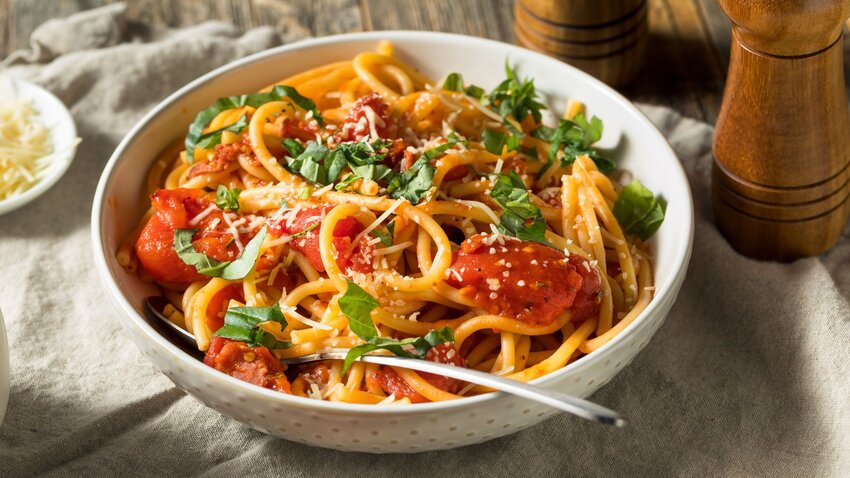
You can’t go to Rome in Italy’s Lazio region and not have bucatini. Upon first glance, bucatini looks no different to spaghetti, but tell an Italian that and you’re going to get a whole lot of exaggerated hand gestures. Bucatini is a round, tubular pasta formed with a hole in the middle. It’s best served al dente to give it a chewier texture, and is believed to come from the Lazio region. The name bucatini comes from the Italian word “buco” which means hole.
You can find bucatini in a host of different dishes like classic carbonara or cacio e pepe, both popular Roman staples, but bucatini really shines when paired with amatriciana sauce. Amatriciana is a hardy red sauce that is surprisingly quick to make, and features a hint of spice from red pepper flakes, and a rich fattiness from sliced guanciale, or pork cheek. Guanciale can easily be substituted for bacon or pancetta depending on what you have available. And don’t forget the wine; Sangiovese is a good choice, especially Sangiovese Romagna, because its cherry and tomato notes will complement the spicy sauce.
Abruzzo: Spaghetti Alla Chitarra

Italians have a lot of creative ways of making pasta, whether that’s rolling it over a fork, inverting it craftily with a knife, or forming it into pockets. One of the most interesting pastas, though, is spaghetti alla chitarra which is made by pressing sheets of pasta into long, square-shaped strands through a pasta cutter that resembles a box holding guitar strings. This distinctive pasta cutter was developed in Abruzzo, and is difficult to find outside of the region, making the pasta a special treat specific to the area.
Just like bucatini, spaghetti alla chitarra is versatile and can be served with a variety of sauces. But for those who value simplicity, pomodoro sauce is a good go-to. Easy, and highly dependent on good tomatoes (San Marzano, of course), a bit of basil, and some quality pecorino, pomodoro sauce is traditional Italian cooking at its best. Naturally, you’ll want to grab a bottle of Montepulciano d’Abruzzo; like spaghetti alla chitarra, it’s specific to the region. Montepulciano also works great with pomodoro sauce because the hint of dry herbs in the wine mimic the herbs you will find in the sauce.
Puglia: Orecchiette
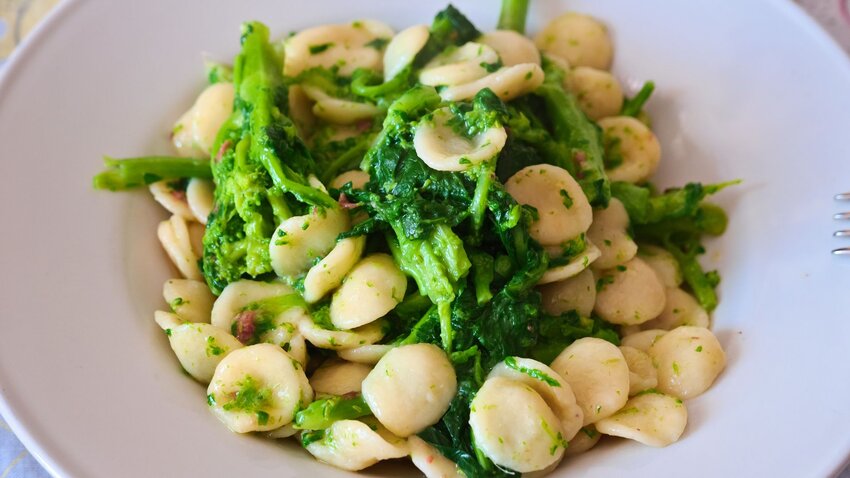
To experience Puglia in one dish, make orecchiette. The small, dome-shaped pasta’s name means “little ear” in Italian, and is made from a particularly tricky technique of rolling pasta dough with a knife, then inverting it on your thumb. (That’s how the Nonnas do it, at least). In Puglia, the pasta is customarily served in a simple tomato sauce, but because of its bowl-like structure, it is also often served with meats and vegetables that fit snugly in the pastas themselves.
Orecchiette with sausage and broccoli rabe is one such dish. Known as a sauté sauce, which is a popular pairing for orecchiette, the dish is made by mixing together garlic, olive oil, sausage, broccoli rabe, and some pepper flakes to taste. (Pro tip: take the sausage out of its casing for added texture). Pair with a crisp Chardonnay from the Puglia region, and you’ve got a heavenly southern-Italian dish with all the culinary flourishes of the Adriatic.

